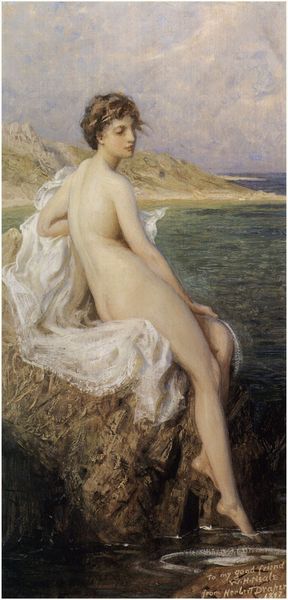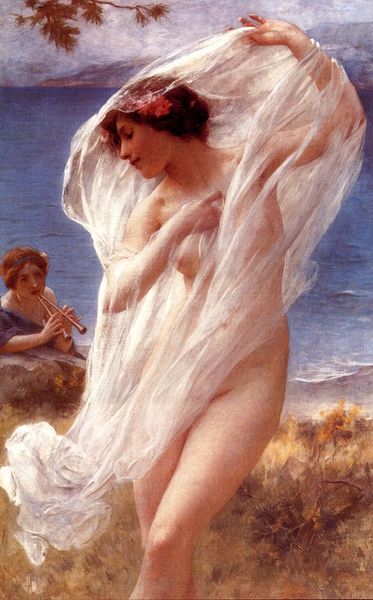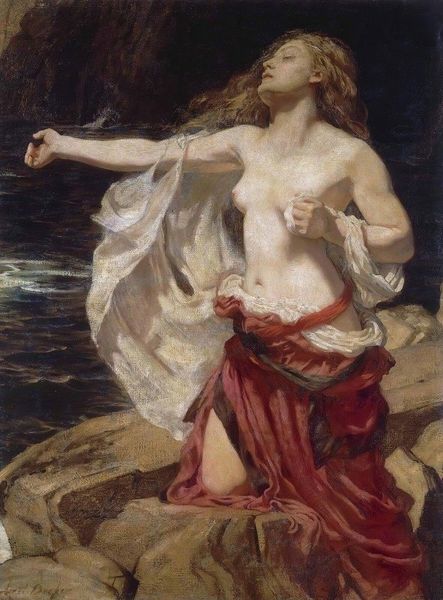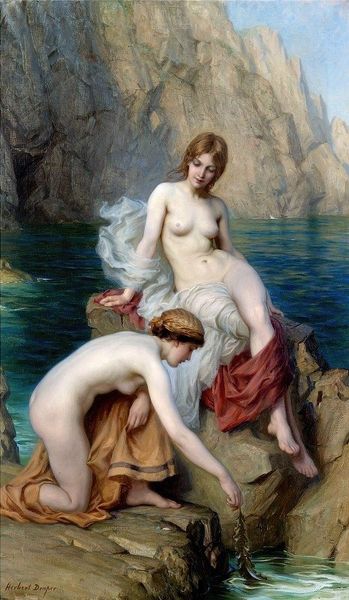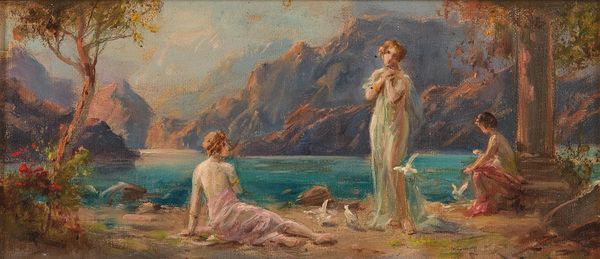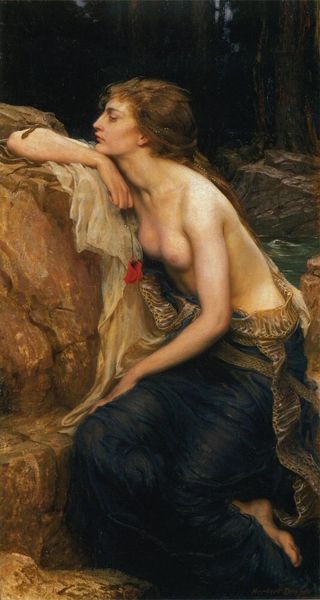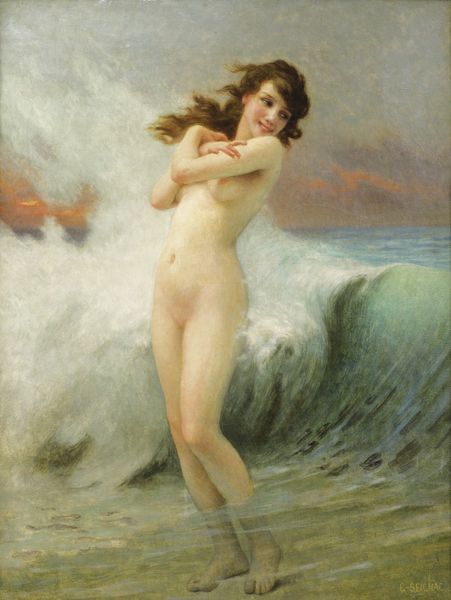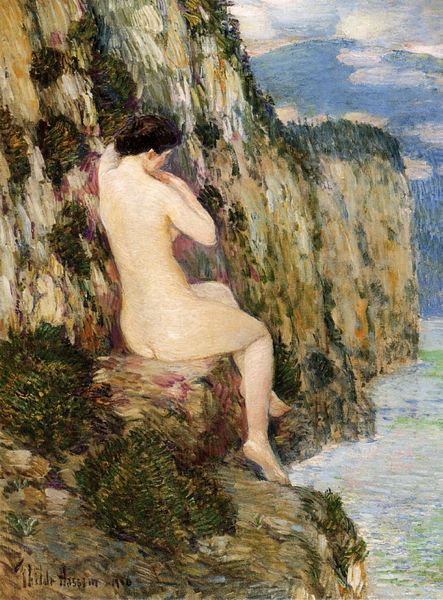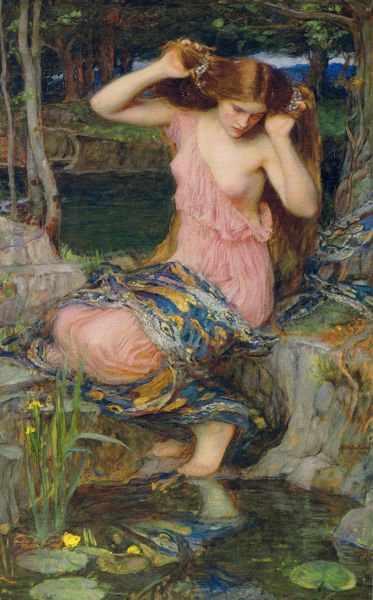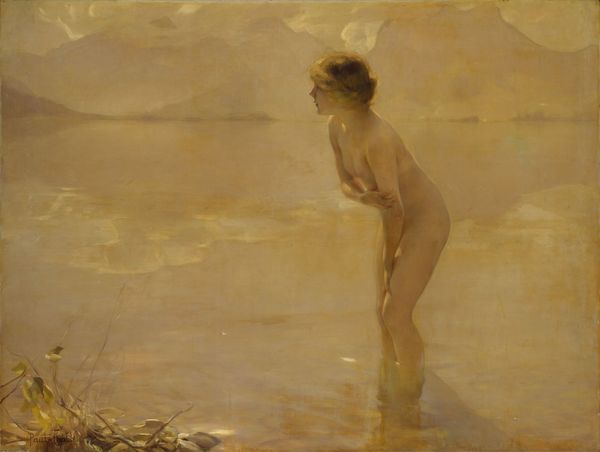
Copyright: Public Domain: Artvee
Herbert James Draper painted "Calypso Island" in the late 19th and early 20th century, a period when classical mythology was often reimagined through a Victorian lens. Draper presents Calypso, from Homer's "Odyssey," not as a powerful goddess but as a figure of tragic beauty and isolation. The painting captures a moment of quiet desperation as Calypso gazes out at the sea, longing for Odysseus's return. Consider how Draper uses the female nude within a historical context where women were frequently objectified. Draper subverts traditional representations, conveying an internal emotional landscape, exploring themes of desire, abandonment, and the complex negotiation of power. Draper invites empathy, allowing the viewer to recognize the multifaceted nature of female identity and experience. The painting shapes an understanding of mythic narratives, highlighting enduring questions about love, loss, and identity. The emotional depth invites us to reflect on societal issues.
Comments
No comments
Be the first to comment and join the conversation on the ultimate creative platform.
